Albania is a holiday destination which has been growing rapidly in popularity in recent times, with sun-seekers lured by the promise of sunny beaches, blue sea and cheap beer only a short ferry ride away from the Greek island of Corfu, served by budget airlines throughout Europe. I was keen too to resurrect my Southern Europe beach vacation tradition from the years prior to my temporary relocation down under, but the idea of visiting Albania, a country that was totally closed off to foreigners until fairly recently under a communist regime which only ended in 1991, was first put into my head a number of years ago when I read the English translations of The Accident and Successor, novels by the Albanian author Ismail Kadare (someone who my time in Albania would reveal to be the country’s most well-known writer, and a name which everyone there knows). Because of these books I was keen to visit Tirana, the capital city, to see how it is today and to learn more about the history and impact of communist rule, and so before heading down south to the beaches, I decided to first fly into Tirana (the location of what is currently the only commercial airport in Albania) and spend a couple of nights there.

The central neighbourhood in which I was staying
With the flight being an evening arrival, I only had one day to explore the city, so I decided to begin it with a walking tour, to really maximise my knowledge of what I was seeing. Tirana Free Tour runs twice daily, meeting at 10am or 6pm at the Opera House in Skanderbeg Square. At the moment this appears to be the only walking tour operating in the city, so the guides are easy to find.

Skanderbeg Square
My group was led by Gazi, a Tirana local who had grown up under communism in the 1980s and was a teenager when the regime fell in the 1990s, so he was extremely knowledgeable about the city, and had a wealth of personal experience which he was willing to draw upon, telling us stories and answering our questions.
We started off there in Skanderbeg Square, where Gazi told us about Skënderbej/Skanderbeg, a man still considered a national hero for his leadership of a rebellion against the Ottoman Empire in the 15th century, whose statue sits upon his horse looking over the hot paving stones of the square. The focal point of the city centre, and probably what you will have seen in any photographs of Tirana that you’ve come across, Skanderbeg Square has on display a number of different aspects of life and history in the city, from the Et’hem Bey Mosque and colourfully-painted government buildings, to the 1980s propaganda mural which has been left up over the front of the National History Museum, to the sound stage which was being set up for some kind of festival.
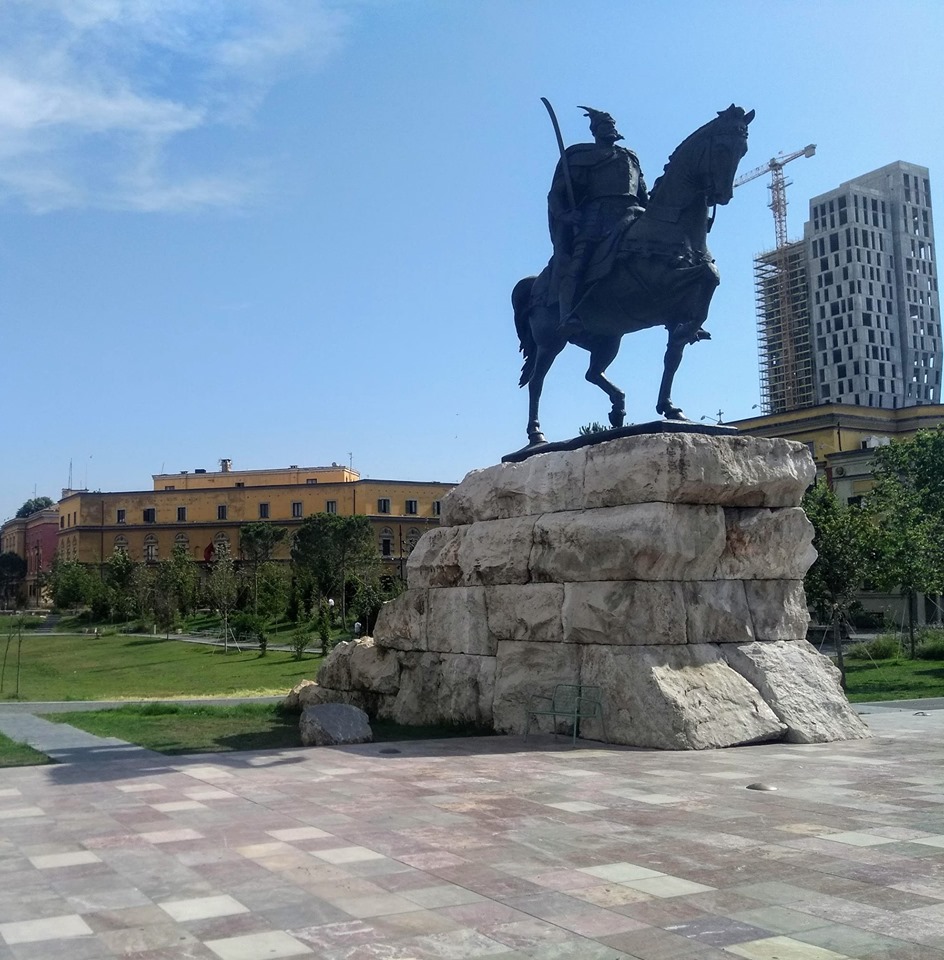
The statue of Skanderbeg

The 1980s mural over the front of the museum
Over the next couple of hours, Gazi led us to some of the main points of historical and cultural significance across the city centre.
We stepped briefly inside the entrance to Bunk Art 2, a nuclear bunker which has been converted to a museum about the role of the security services during the communist era; the roof of the dome is plastered with photographs of Albanians who were executed during the rule of Enver Hoxha, the leader of the Party and of the country for four decades until his death in 1985. The original Bunk Art, a similar bunker converted to a much larger, broader museum, can be found in the suburbs of Tirana and is apparently worth a visit if you have more time.
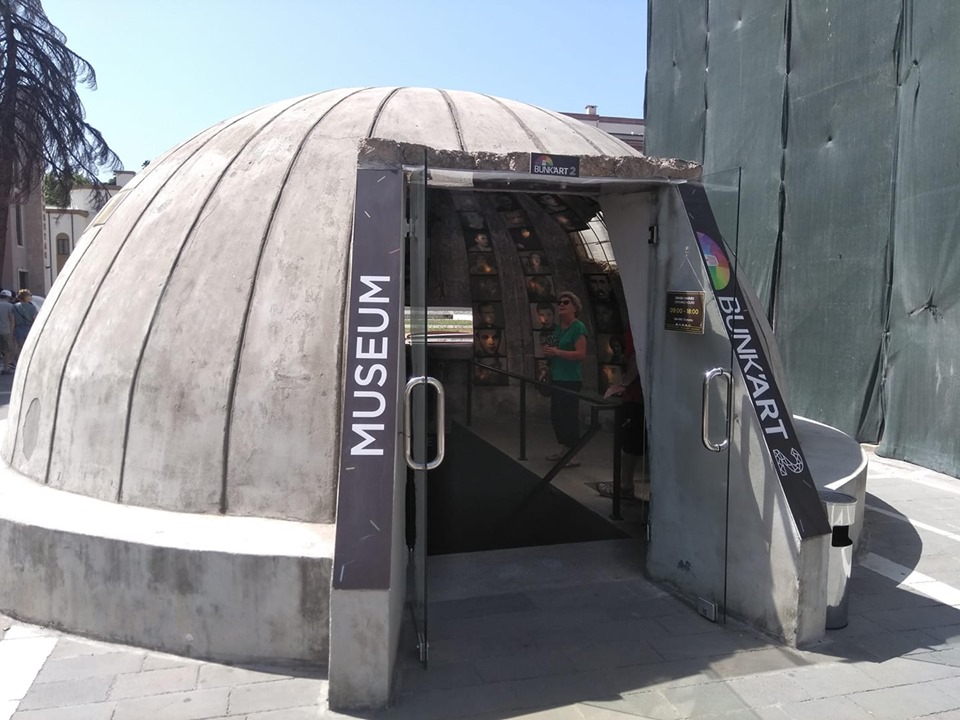


The Clock Tower.
Gazi then led us down an unassuming side street behind the art gallery, where we were suddenly faced with the figures of Stalin and Lenin. These statues had previously taken pride of place in the city centre, but were removed when communism fell in 1991. In recent years, the government have decided to gather them together and put them back out on public display, as a reminder of the country’s history, and for tourists to see. This decision was apparently controversial amongst locals, but Gazi appeared to be of the opinion that they should be out in the open in this way, and I would agree; regular readers will already know my views on the importance of confronting the past, and learning from it.

Next up was St Paul’s Catholic Cathedral, the entrance of which features a statue of Mother Teresa. Beyond Ismail Kadare, the writer who first inspired me to visit Albania, another famous figure whom Albanians proudly claim as theirs is the well-known missionary and now saint – even though she was actually born in Skopje, now the capital of North Macedonia, she came from an Albanian family. Nënë Tereza squares can be found in Tirana and in Saranda (and I suspect in other cities and towns too), and the airport in Tirana is also named after her. There are not a huge number of churches and mosques to see in Tirana – religion was totally banned in Albania from 1967 until after Hoxha’s death in 1985, with harsh penalties (including death) for those caught practising, and so many places of worship were taken down or converted to other purposes – and it was interesting to hear from Gazi that there is no tension between the different faiths in modern-day Albania, presumably because everyone has had that recent experience of being persecuted for their beliefs.

We then moved on to another icon of communist times in the city – Piramida, or the Pyramid of Tirana. This grey, very Soviet-looking structure was built in the late 1980s, after Enver Hoxha’s death, and opened as a museum for his legacy, until everything changed in 1991. Since then it has had several other functions, but today it is mostly dilapidated. Gazi told us a fascinating story about how he and his friends would come and hang out here in the evenings as teenagers. It was the new, open Albania, and heavy metal music had arrived; they would sit up here and listen to Metallica (and the Albanian copycat bands which had sprung up, with apparently very dubious English lyrics!). The boys had grown out their hair (something which was not really allowed in the previous era) and were keen to show their appreciation of this new genre, but with no logo clothing having yet found its way into the country, they were forced to improvise, cutting open their pens and using the ink to do their own customisation. Gazi told us that he used his red pen to inscribe the name of the Metallica album Kill ‘Em All (his first three words in English!) down one leg of his brand new imported jeans – as you can probably imagine, his mother wasn’t impressed!

Walking onwards through the Blloku district of the city centre, now a trendy area full of bars, cafes, restaurants and clubs, we reached the Postblloku Memorial, a reminder of what this part of town (formerly the restricted area in which Hoxha and his government lived and worked) once represented. Another bunker sits next to a fragment of the Berlin Wall, which was gifted to the city.


Nearby, we stopped to look at the Former Residence of Enver Hoxha (also referred to in tourist guides as the House of the Dictator). No one really knows what to do with it, so it sits there, closed up and empty behind its iron gate. Ironically (and perhaps deliberately, I couldn’t help but wonder, although Gazi didn’t say either way), a bastion of capitalism is now sited directly opposite the house; the country’s first branch of KFC, which opened in 2016 (and was the first international fast food restaurant in Albania. Burger King had arrived for the first time a few weeks prior to my visit, and there is still no McDonalds).

Gazi led us back to a point near Skanderbeg Square to end the tour, offering directions and recommendations for anyone who wanted them. Out of all of the walking tours I’ve done, I think that this was the most valuable; Gazi’s thorough knowledge of his city, and willingness to share the stories of his childhood and to answer our questions, really left me with a good understanding of the history of Tirana and Albania. I’d go as far as to say that this tour is an absolute must-do for anyone visiting the city.
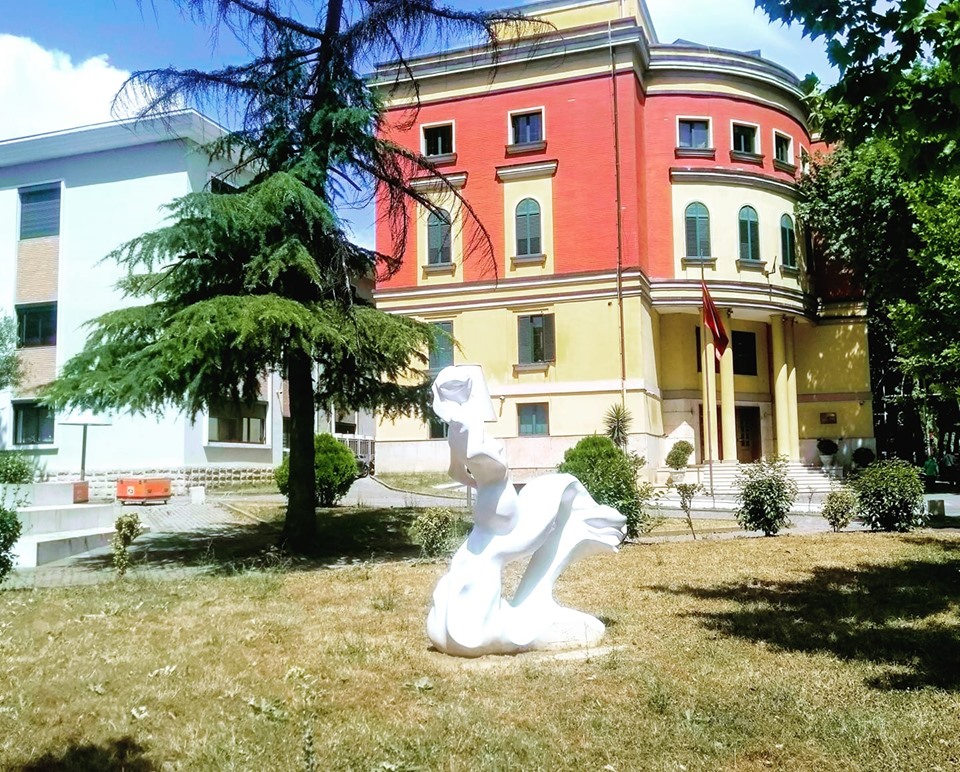

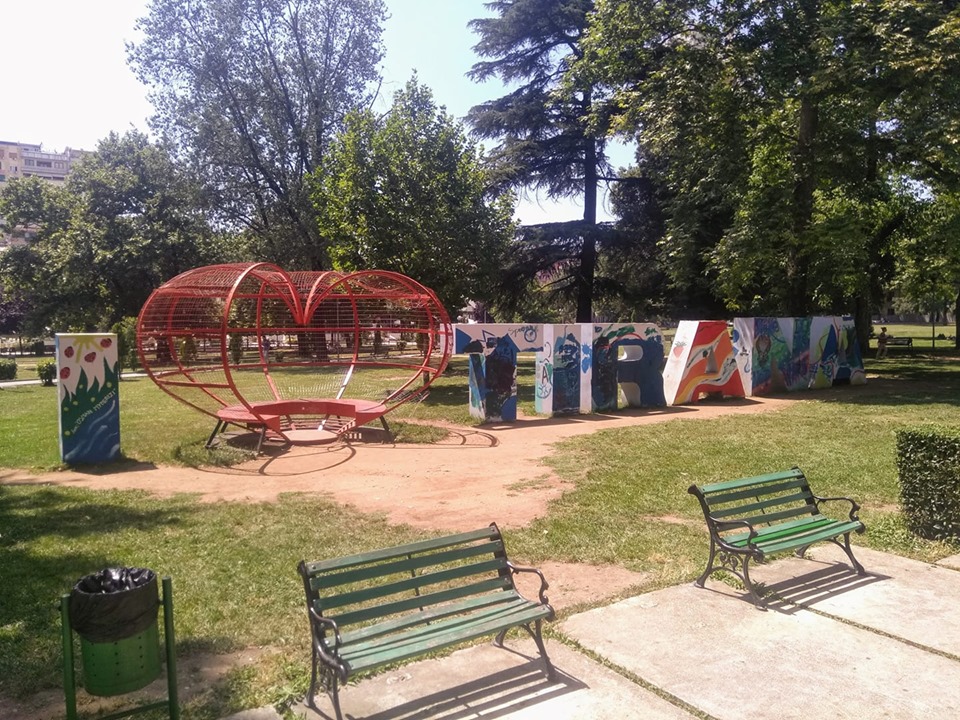

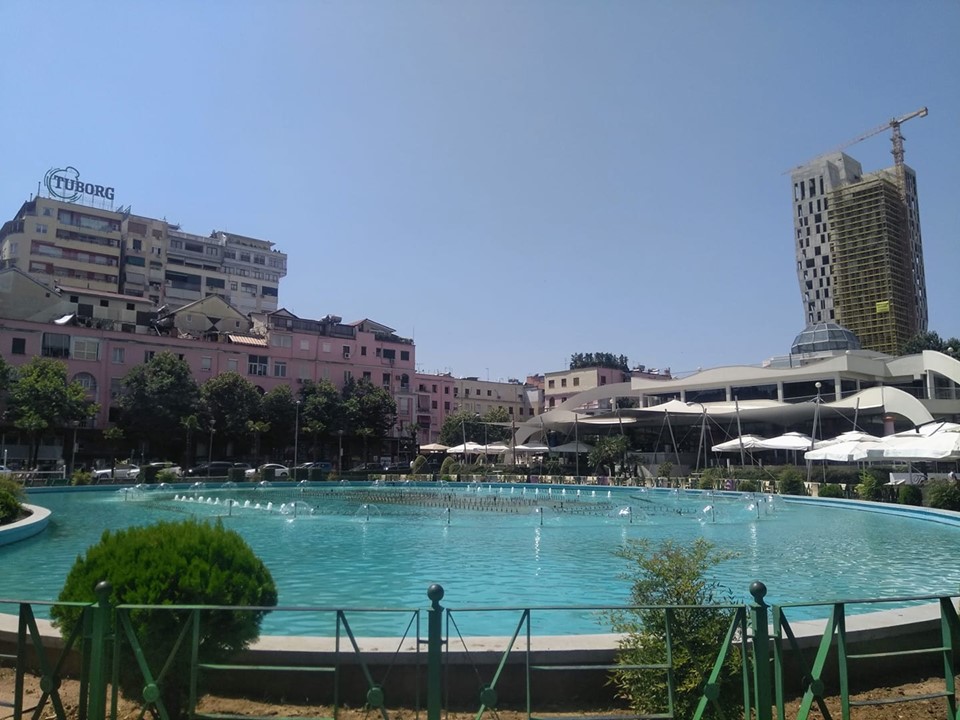
The Taiwan Complex water fountains
I began the afternoon by wandering around alone a little bit further, through Blloku, along the river and past the bright blue water fountains in the Taiwan Complex, before deciding to get out of the 36 degree heat for a while by visiting a museum. With time to explore only one, I picked the House Of Leaves, the Museum of Secret Surveillance. The building itself was actually one of the communist government’s security offices, and now, as the museum, it hosts a number of artifacts from the country’s security operations between the 1940s and 1980s; documents, photographs, items such as recording equipment, and video interviews with both those who worked there, and those who were imprisoned, and sometimes tortured, under allegations of endangering national security or breaking laws such as the ban on religion. There were English translations and subtitles for everything, and the museum offered a deeply interesting insight into what was going on in Albania during this time. The exhibit which stuck with me the most was the final one, interviews with former prisoners and with families of those imprisoned or executed; something which several of the spouses spoke about was the conversation that they had with prison guards or police officers who informed them that their partner had been taken away to another prison, or sentenced to death. In each case, when they asked for the reason why, the security officers told them that “the Party knows”, and in each case, the spouse simply said “Long live the Party” and left – “what else could I say?” It sounds Orwellian, but this was real life, in a European country, in living memory.
In the evening I went out for a walk to see Tirana after dark. Skanderbeg Square and the paths by the water fountains in the Taiwan Complex were full of local families out for a similar night-time stroll, and the city was buzzing with life.

I had read that finding vegan food might be tricky in Albania, and this proved to be correct! The only place that I managed to find in Tirana with some vegan options on the menu was Çoko Bistro in Blloku, where I had a vegan risotto. If you’re vegan and you’re staying in Tirana for more than a day or two, I’d suggest staying somewhere with a kitchen and making your own food from the grocery stores.
My day in Tirana was illuminating and packed full of learning and reflection. I realised how little I had known previously about Albania and its recent history, despite my reading of some of Kadare’s work – even though we studied post-war Europe and communism at school, I don’t recall Albania ever being mentioned. I would honestly say that Tirana has been possibly the most interesting city that I have visited so far in my travels around our planet. I wasn’t too sure what to expect from it, but it felt like a very friendly and welcoming place for visitors, which is willing to lay bare its history and to confront it. I felt very safe as a solo female traveller, and didn’t experience much of a language barrier; everyone was very happy to try their English even if they weren’t too confident in speaking it, and they giggled good-naturedly at my (probably horrendously mispronounced!) attempts to greet and thank them in Albanian. If you’re coming to Albania, I would strongly suggest that you make a stop in Tirana, in order to really get a grasp on the story of this beautiful, fascinating country.
Enjoyed this post? Here’s a Pin!
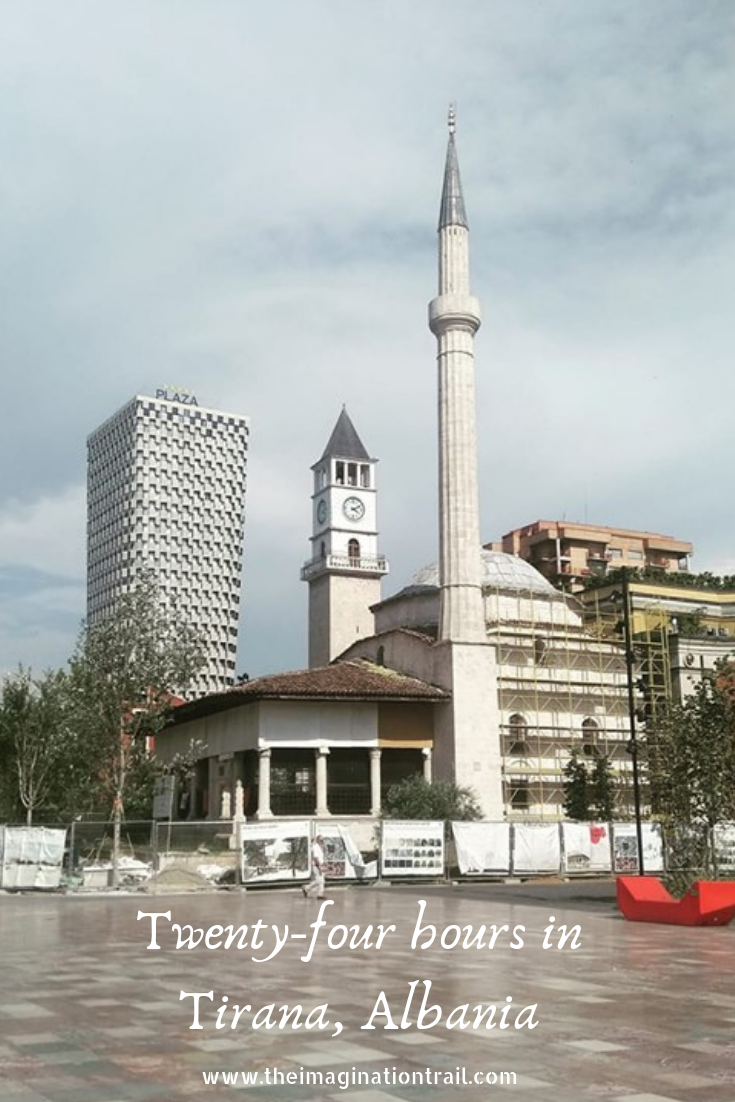
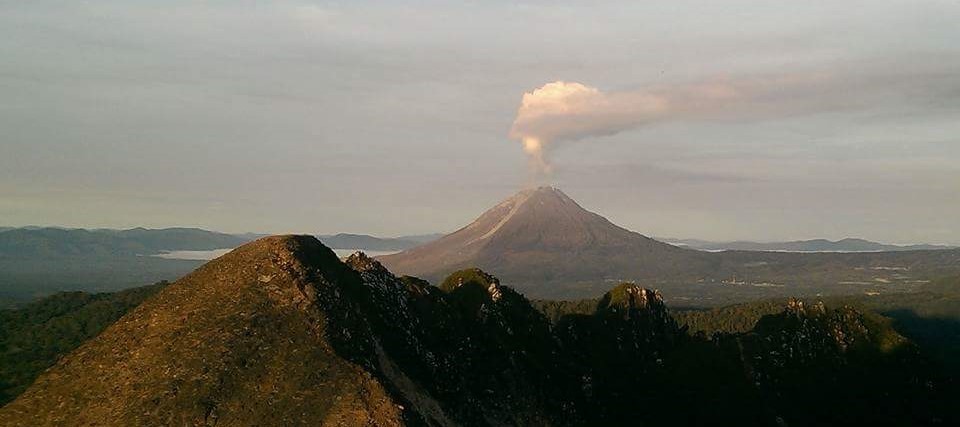



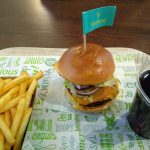
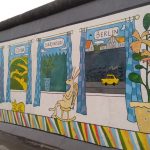


I’ve never been to Tirana but it looks absolutely beautiful and has such rich history. Definitely added to my bucket list!
Pingback: Gjirokaster and Butrint: two unmissable day trips from Saranda, Albania - The Imagination Trail
I love Tirana! This city is incredible and changing so fast – although I see they still haven’t finished this gigantic building with the strangely sized and shaped windows. I confirm that visiting the Bunkart on the outskirt of the city is great if you have one more day to enjoy Tirana. You can add to that taking the cable car and going up to Mount Dajti for a breath of fresh air and an amazing view of the whole city.
Yes I’m not sure what that building is supposed to be! Thanks for reading and for sharing those extra tips too 🙂
Tirana is SO interesting! I was really gutted because I went there as part of a tour and we were so rushed. We only had two hours in the city (!!!), and half of that was spent doing a walking tour which was nowhere near as good as your one sounds! I did manage to squeeze in a visit to the BunkArt museum, but apart from that, not a lot! Love your photos, and the stories of your guide (again, we had nothing like that!). I’d love to check out Blloku.
(Also someone has set up a new FTB style group, if you’re not a member yet I can send ya the link! Can’t believe what happened!)
Ohh sorry to hear your tour was really rushed – what a shame! Yes the guide really made it all come alive.
(And thank you – someone else has already sent me the link! I was feeling bereft!)